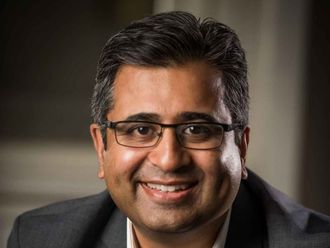
From the economic standpoint among developed economies, a rising population (including immigration) is taken to be basically a good thing. Given that government policies are typically predicated on encouraging the numbers, to pay in future for commitments already pledged, that presumption is built in as a practical necessity. In essence, the circular flow of income has to be propelled like an ever-increasing, financial pyramid scheme.
How much this economics of quantity impinges on the alternative perception, of quality of life, in relatively crowded continents such as Europe and Asia might provoke debate. When it comes to issues such as climate change, moreover, this particular topic might be at the forefront of discussion forums. Indeed the compatibility of economic growth aspirations with concern for the environment could be doubted at its very root. But that’s a tangential point.
In the Gulf, as elsewhere, expectations of population trends are inscribed as a baseline against which policies have to be derived so that countries can thrive, or merely cope. It is familiar enough that the demographics of the region present a serious dilemma for governments that must shape their budgetary accounts and employment strategies to deal with likely popular demands upon state services, utility resources and the jobs market.
A recent report by BNP Paribas spelt out the issue.
Expressing doubts over the foreign and domestic usage of Middle East energy output (falling and rising respectively), it found that “all in all, from a medium- to long-term perspective, oil income is under pressure... [and] for the most heavily populated countries, the decline in income per capita could become politically unsustainable”. That’s a heavy message in a region whose experience of the so-called Arab Spring and its continuing legacy has been so difficult.
Thus emerges once again the call for non-oil diversification, with the suggestion — easier said than done — that industrial development which is energy-intensive (in tune with the Gulf’s comparative advantage) does not resolve the problem. So we turn to the green agenda, essentially conservation, particularly relative to price, while naturally taking population growth, which has an exponential dimension, as read. Considering the scale of the task, it would be understandable to have qualms about the battle ahead.
As a detailed report by Markaz highlighted last year, the GCC, while one of the wealthier regions, is unique in its extensive welfare system, reliance on the hydrocarbon revenue stream, and a demographic structure skewed towards a younger cohort entering the labour force in higher numbers every year. It noted that, based on unchanged policies and historic trends, the IMF had forecast a 2 per cent annual growth in real GDP for the remainder of the decade, alongside an annual increase in population of 3.5 per cent.
The relevance of the difference between GDP growth and per capita GDP growth becomes very apparent in that comparison.
“Governments in the GCC are aware of the demographic boom and its resulting pressure on [the] fiscal budget,” and had acted on housing, infrastructure, and education, Markaz admitted.
Still, the tendency of the state to provide a safe haven in providing jobs was a worry. Not only did Saudi Arabia, Bahrain and Oman (in ascending order) exceed the world average in jobless ratios, but the GCC’s data did not account for masked unemployment, by way of bloated bureaucracies, and underemployment. “For this reason, unemployment in the GCC is swayed to look lower and less challenging than its actual connotations.” (See box)
The United Nations reported, also in 2012, that “in spite of the active policy efforts for economic diversification, major energy exporting countries are still far from [their] targets.” The agency considered that another oil price plunge was unlikely, but surmised that a “weakened non-energy sector in the Arab Mashreq and Maghreb” made the entire Mena region “vulnerable”. It identified high unemployment and income inequality as indicative of structural weakness, with important social and political ramifications.
It’s not news, of course. But the regional news is rather dramatic these days, and the concerns identified perennially in such research are no less relevant for being periodically repeated.












